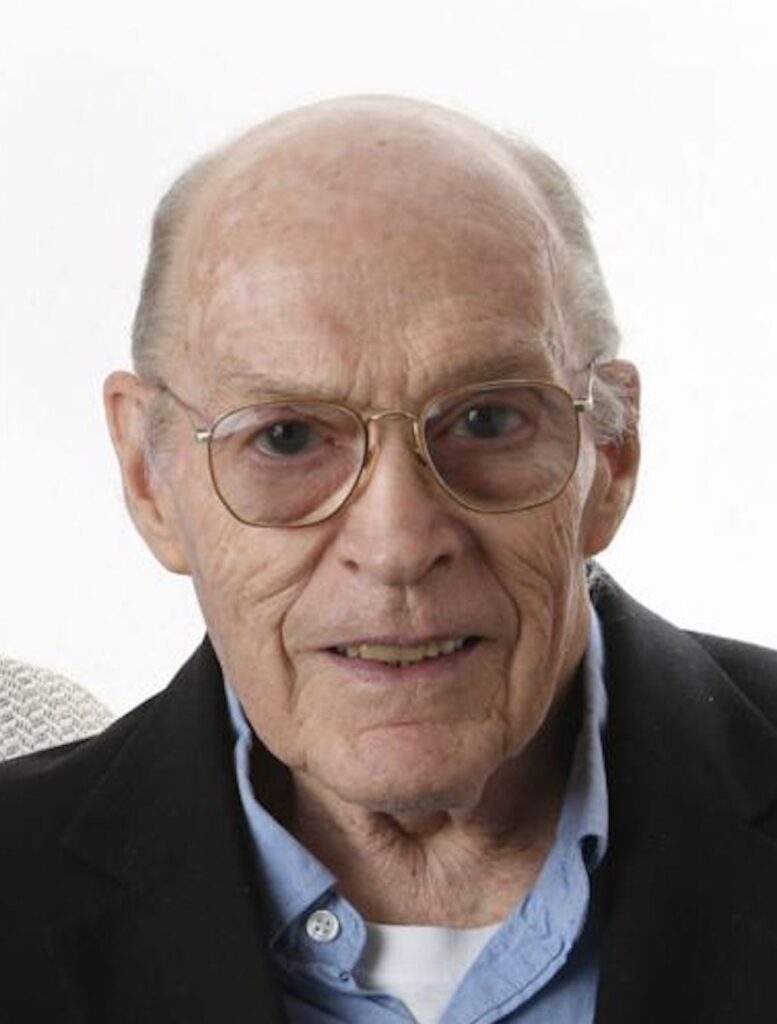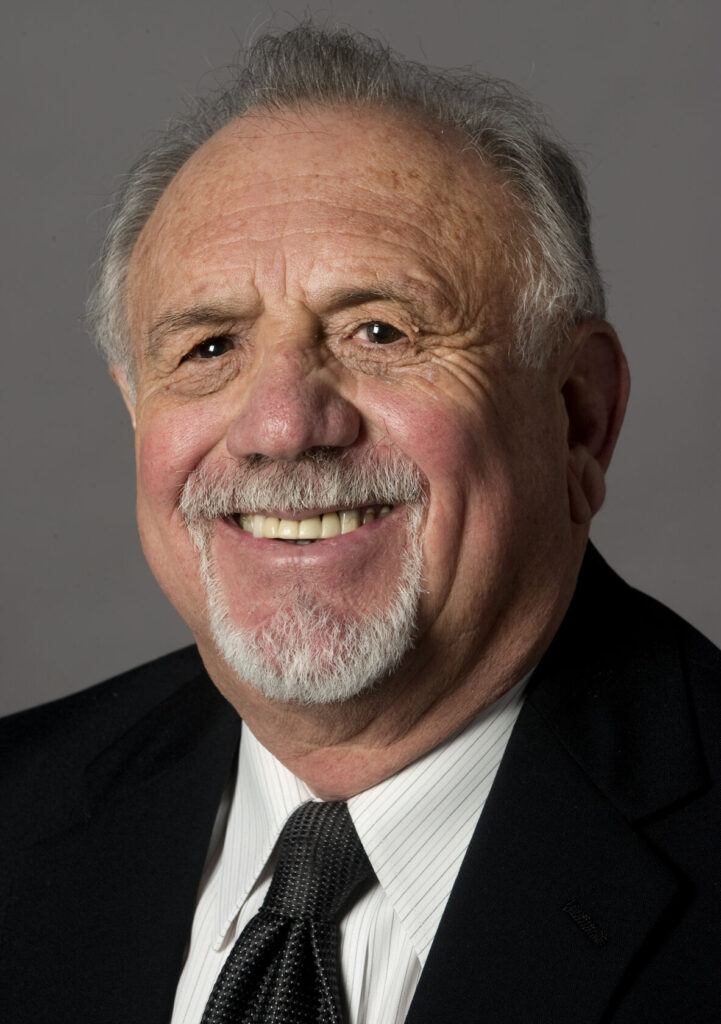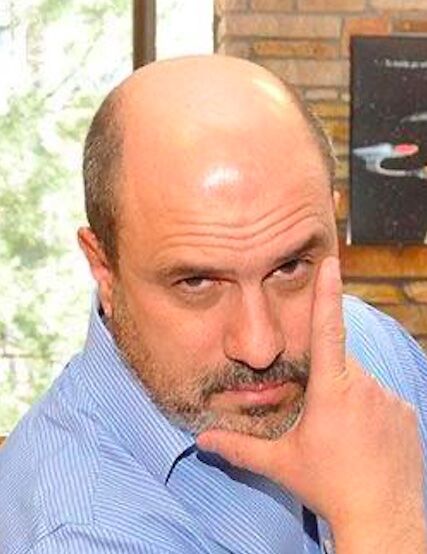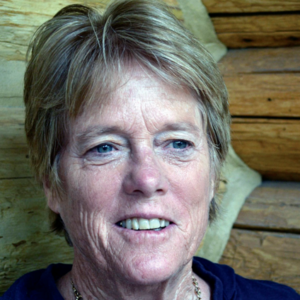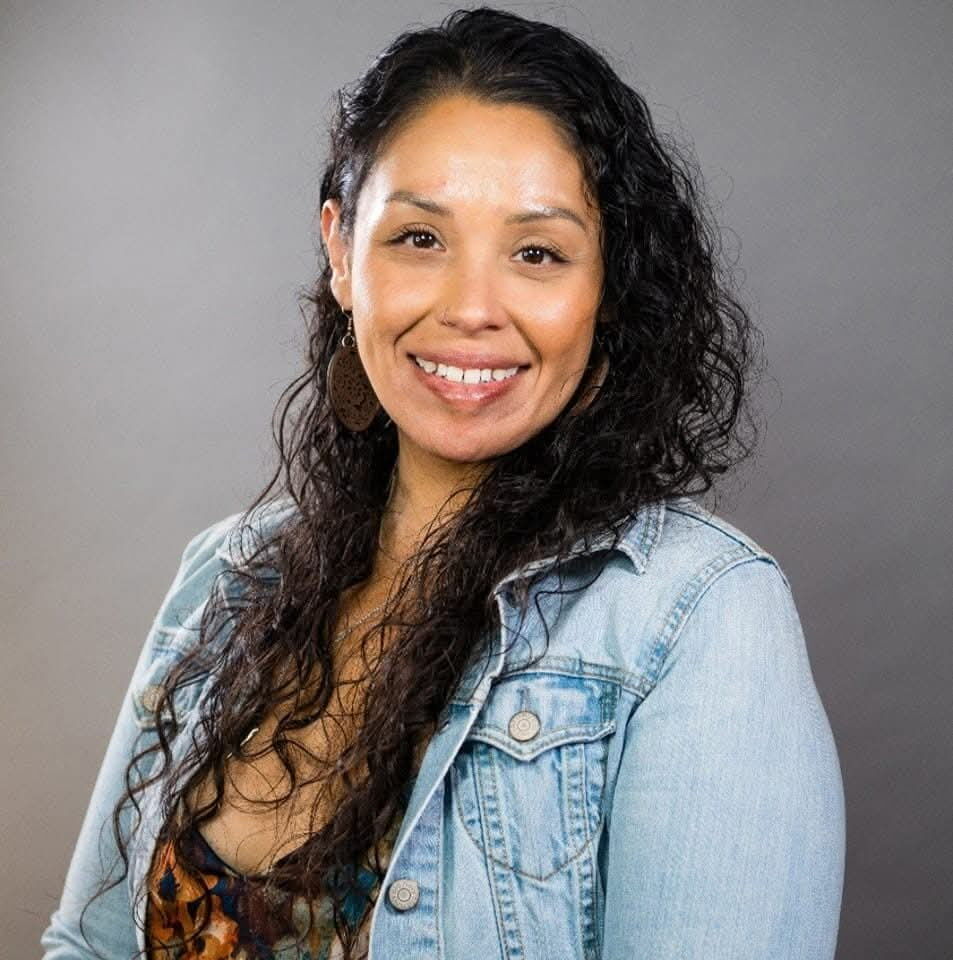Hudson: Winter Park Express maiden voyage reignites history
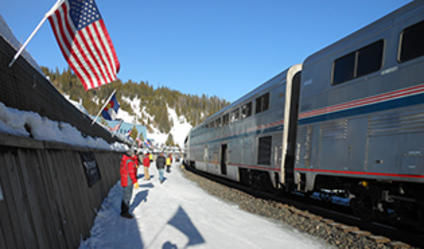
It was a crisp Colorado morning at Union Station last Saturday. A waning moon offered a sliver of light in the still dark at 6:15 AM. Even at the early hour, Denver’s Mayor, Michael Hancock, and both of Colorado’s U. S. Senators, Michael Bennet and Cory Gardner turned out to stand in front of an Amtrak train composed of two diesel engines and eight passenger cars waiting to whisk 450 passengers to Winter Park for the first time since 2006. Jim Souby, President of the Colorado Rail Passenger Association, and a handful of volunteers in bright yellow vests embroidered with their ColoRail logo assisted skiers in loading their gear for a day on the slopes. It was the 75th Anniversary for both Winter Park and the Ski Train, which first ran in 1940, with the exception of the WWII years, more or less continuously through March of 2009. The 2015 anniversary run sold out in less than ten hours, and an added trip on Sunday in four.
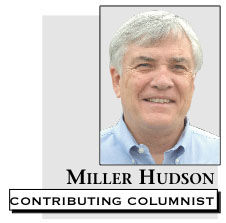
All the speakers echoed the hope that this success might lead to a restoration of regular weekend service next ski season. Both Senators endorsed the Ski Express as an integral piece of the Colorado lifestyle. Gary DeFrange, President of the Winter Park resort on behalf of Intrawest, lessor and operator of Denver’s ski area, recounted a tale of receiving a January call from Amtrak in Chicago suggesting a possible revival for the popular service from Denver. In just a few short weeks, a plan was put together using excess Amtrak engines and vehicles sitting idle in Chicago rail yards. Amtrak, whose budget is always under pressure from Congress, has adopted a more entrepreneurial stance, searching for profitable routes they can restore. A conductor on the California Zephyr, that links San Francisco and Chicago through Denver, who had also worked the Ski Train, developed a business plan and sent it up the chain of command. Joy White liked it, and traveled to Colorado on a scouting trip in February.
The double deck coaches provided by Amtrak were a cut above the creaky, drafty cars that old timers recall. Seating was far closer to the first class comfort on an airline than the school bus benches provided by the Denver and Rio Grande. The ride was exceptionally smooth and jolt free. Departing through the Denver switchyard, it was astonishing to see how many residential units are filling up the Platte Valley, out of sight beneath freeway bridges and behind visual barriers. It is estimated 60,000 individuals now live within walking distance of Union Station, many of them Millenials. Together with aging rail aficionados, they seemed to have jumped on-line and grabbed most of the seats for the Anniversary run to Winter Park. Picking up speed through Arvada, the ski train skirted shuttered buildings near Rocky Flats and approached the long grade into the foothills where a train of brand new, “crushable” oil tankers waited on a siding while we passed. Souby observed that ColoRail is growing concerned about the number of oil shipments passing through downtown transporting the flammable, some say explosive, Bakken crude from North Dakota to Gulf refineries. Discussion of a rail bypass to the east of Denver is sure to be revived.
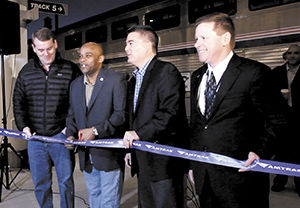
Passing through nearly thirty tunnels and offering captivating glimpses of the Continental Divide, the Ski Express approached the “world famous” Moffat tunnel. Although just 6.2 miles in length, this was the longest rail tunnel in the world when it was built between 1923 and 1927. Two dozen workers died during construction accidents and the cost jumped from an estimated $6.6 million to $24 million dollars (nearly $300 million today). David Moffat first proposed the tunnel in 1902, but it was repeatedly delayed by fears from legislators in southern Colorado that the tunnel would steer ever more business through Denver. Only the floods of 1922 allowed Governor Oliver Shoup to trade relief funds for Pueblo reconstruction in exchange for permission to create a tunnel district that could float bonds for construction. Voters from counties along the rail route approved the Moffat tunnel district in order to provide Denver a direct connection to the West Coast, cutting 176 miles off the transcontinental route through Cheyenne.
It is interesting that Colorado voters were willing to shoulder this expense a century ago, but resist any effort to relieve I-70 congestion today – dismissing the advanced guideway system (AGS) along I-70 identified by CDOT as its preferred congestion relief alternative as “too expensive.” Moffat tunnel bonds were not retired until 1983 and the commission lingered around until 1998, leasing the tunnel to Union Pacific, when it became involved in political and real estate shenanigans at Winter Park. Mayor Webb put them out of business, and engineered the resort management and development contract with Intrawest.
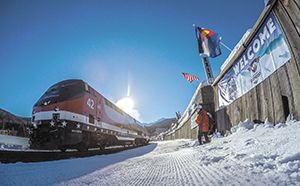
Gary DeFrange reports the twin tunnel (Veterans Memorial Tunnels) widening at Idaho Springs “…has cut fifteen to twenty minutes off the return drive to Denver.” He is hopeful that the tolled shoulder lanes currently under construction from Empire to the tunnels will shave off another fifteen or twenty minutes, reducing the back-ups that frequently extend from Empire to the bottom of Berthoud Pass. “We may be an hour closer to Denver than the Summit County resorts by next year,” he grinned. It appears Winter Park is already snagging skiers and that is only likely to increase.
One hour and forty-five minutes after leaving Union Station the ski train slowed to a stop as it emerged from the Moffat tunnel. Perhaps a third of the passengers had no intention of skiing, but planned to go into town for shopping and lunch before returning. They were along for the ride. Young couples who napped on the trip up piled out to walk to the lifts. Two inches of fresh snow was just enough to provide great packed powder conditions. If the ski train proves as popular as a regular thing as it did as a “one off”, it might carry 700-800 skiers each Saturday and Sunday, not much of a dent in the 150,000 Front Range travelers that pass through the Eisenhower tunnel but a relaxing alternative for those who hate to drive. My daughter bought me a first class ticket for Christmas fifteen years ago. That was a civilized experience: continental breakfast and coffee on the way up and time to peruse The Rocky Mountain News and Denver Post Sunday editions. A few libations to relieve my muscle strains on the way back capped a memorable day on the slopes. During our return to Union Station, Amtrak officials were speculating about dining cars, overnight fares, maybe Friday night and Monday morning runs.

Pricing may prove tricky. The Anniversary trip was $75 roundtrip. That struck many passengers as a little much as a regular thing. An unscientific survey found that $50-60 felt reasonable, preferably coupled with a break on lift tickets in order to hold down the marginal cost. Bob Knous, who worked for Dick Lamm and later with East-West partners, recounted a time in the late ’50s and ’60s when Denver Public Schools offered a $5.00 ski trip including train fare, lift ticket and a bag lunch. Equipment rental and a lesson was another $5.00. In 2014 that works out to about $40 – not a bad way to recruit future skiers!
Miller Hudson is a public affairs consultant. He can be reached at mnhwriter@msn.com



